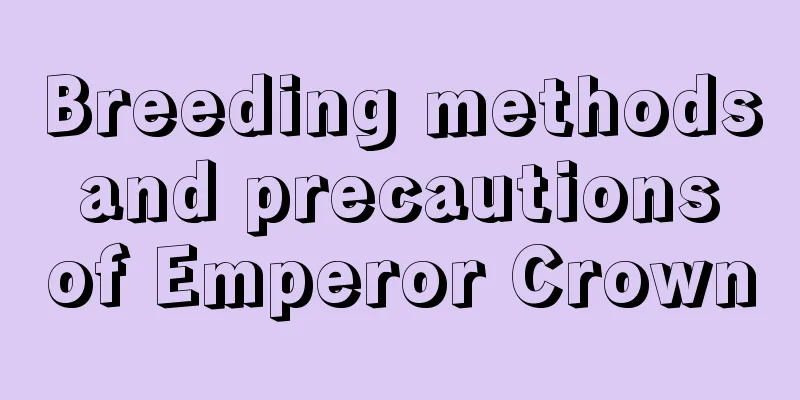Breeding methods and precautions of Emperor Crown

How to cultivate the imperial crownPot soil selectionFor potted imperial crown, since the roots of the imperial crown are relatively thick, you need to choose a deeper flower pot. Putting some tiles at the bottom of the pot will help with drainage. The soil can be sandy soil with good air permeability. You can mix coarse sand, garden soil, leaf mold, and a small amount of bone meal into a medium and then put it in the pot. Light and temperatureThe Imperial Crown likes sufficient sunlight, but not direct exposure to the sun. Exposure to the sun will not only affect its growth, but also cause discoloration. However, the Imperial Crown cannot be grown in too much shade. For home cultivation of the Imperial Crown, the potted plants can be placed in a room with sufficient light, and attention should be paid to proper shading in the summer when the sun is strong. The suitable temperature for the growth of Imperial Crown is between 5℃ and 30℃, and the day and night temperatures should be kept within an appropriate range. The Imperial Crown prefers a cool climate in winter and requires the temperature to be no lower than 5℃ for wintering. Watering and fertilizingThe Imperial Crown can be watered sufficiently during its growth period, but it does not like an overly humid environment. If water accumulates in the pot, it will easily cause root rot. Basically, the soil should be maintained at an appropriate level of dryness and wetness, not too dry or too wet. As for fertilizing, it is basically sufficient once a month. Remember to sprinkle some bone meal before potting. Precautions for breeding of imperial crownReproductionThe propagation of the Imperial Crown is relatively difficult, and generally two methods are used: seed propagation and grafting propagation. Seed propagation can be done in pots indoors in May and June, but the germination rate is low and the growth will be slow. Grafting propagation is carried out in June and July, using Ophiopogon japonicus or Cyperus rotundus as rootstocks. Pests and diseasesThe main diseases of the Imperial Crown are anthracnose and root rot, and the main insect pest is red spider mites, which can be controlled by drugs, and attention should be paid to ventilation on daily basis. |
<<: Cultivation methods and precautions of Clematis
>>: Instead of planting flowers and grass, how about some special plants?
Recommend
When is the right time to sow rapeseed?
Rapeseed is a common oil crop with high economic ...
What to do if the tip of Clivia leaves is dry
1. Replenish water Reason: When growing Clivia, y...
Should I use a large or small pot for Dieffenbachia?
Should I use a large or small pot for Dieffenbach...
Can Clivia be washed with rice water?
1. Can it be used? It can be watered with the wat...
My wife said: If you buy more succulents, I will divorce you...
My wife said if I buy meat again, she will punish...
How to grow Roxima succulent
1. Lighting During its growth process, it likes s...
Four Seasons Red Maple Seed Planting Method and Precautions
1. Planting method 1. Process the seeds: Wash the...
What is the reason for the water content of succulents and how to remedy it
1. Drain water in time The main reason for succul...
How to improve the survival rate of Christmas cactus grafting
Grafting time should be timely If you want to inc...
Reasons and solutions for hydrangea not blooming
Hydrangea is a very ornamental flower . It is mad...
How and when to plant radish
Radish planting time and month Radish is a common...
How to grow oil painting flowers until they overflow the pot?
Oil painting flowers generally refer to oil paint...
Which month is the best to plant chives?
Leek, as a popular perennial root vegetable , is ...
How to plant baby's breath
1. Soil disinfection The survival of baby's b...
The main value of Spiraea hemp
Can be used in gardens The flowers of the spirea ...









